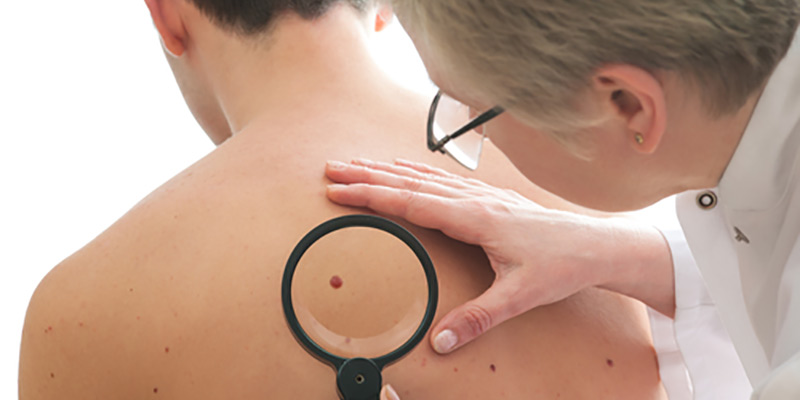3 Different Types of Skin Cancer and Their Warning Signs
One in five Americans will be diagnosed with skin cancer in their lifetime, making it the most common form of cancer in the United States. There are different types of skin cancer, and they each have different treatments and prognoses, so it’s important to understand the nuances and take steps to protect yourself and your skin.
1. Malignant Melanoma
The least common but deadliest form of skin cancer is malignant melanoma, and it develops in the pigment-producing cells of the skin. Those with fair skin and a history of sun exposure have the highest risk of melanoma, and this type of skin cancer can strike as early as the 30s. Early detection is key for the best outcomes and survival rates, so if you see a suspicious spot, don’t wait to get it checked out by a dermatologist.
The American Academy of Dermatology recommends that you regularly check your moles using the ABCDEs of melanoma:
- Asymmetry: Moles that appear asymmetrical, meaning that the two halves aren’t mirror images of each other, may be cause for concern.
- Borders: Look for irregular or wiggly borders that aren’t clearly defined.
- Color: Benign moles should be relatively uniform in color, whereas potentially cancerous moles may appear to be varied in color, with shades of brown, black, white, or even red or blue.
- Diameter: Melanomas are generally larger than the size of a pencil eraser, although they can be any size.
- Evolution: Note any changes that you see in any of your moles over time. If you notice that a particular mole is growing in size or changing color, for example, consult your dermatologist.
2. Squamous Cell Carcinoma
The second most common skin cancer is squamous cell carcinoma, and it occurs in the cells that make up the surface of the skin. Those with light skin and a history of sun exposure are most prone to this type of skin cancer, and men experience it more often than women. Squamous cell carcinoma usually begins as actinic keratoses, which are abnormal cells that appear as rough, red bumps on the face, ears, scalp and backs of the hands. There are different types of squamous cell carcinoma, and these lesions can spread to other parts of the body.
3. Basal Cell Carcinoma
Accounting for more than 90 percent of all skin cancers in the U.S., basal cell carcinoma is the result of unprotected sun exposure, and usually occurs in fair-skinned men and women over the age of 50. Although this skin cancer rarely spreads to other parts of the body, the lesions can damage surrounding tissue if left untreated. The face is the most common area affected, but basal cell carcinoma also appears in areas like the arms, chest, back, legs and scalp in about 20 percent of cases. Basal cell carcinomas grow slowly and usually look like a small dome-shaped bump that can be surrounded by small blood vessels. In order to make a diagnosis, the lesion must be removed and biopsied.
How to Lower Your Skin Cancer Risk
The number-one way to minimize skin cancer risk is to start wearing sunscreen 365 days a year, even if you spend the majority of your time indoors. Keep in mind, too, that the sun’s UV rays can penetrate glass, clouds and can be dangerous even in the winter.
In addition, see your dermatologist at least every 12 months for a screening. Those who may be at higher risk may benefit from visits every six months. You should also get to know your own skin, as most skin cancers are detected by the affected individual. When doing a self-check, keep the ABCDEs of melanoma in mind, and if you notice anything unusual or see any changes, call your dermatologist ASAP.
Dr. Leslie Baumann, M.D. and her team at Baumann Cosmetic Dermatology believe in proof, not promises. World-recognized for both cosmetic and general dermatology, our treatment strategies rely exclusively on evidence-based, scientifically verified products and procedures that promote skin health and a natural appearance. We combine effective medical procedures with individualized instruction on proper skincare, nutrition, supplementation and lifestyle in order to maximize the health of the skin and body as a whole while minimizing the effects of aging. For more, visit Dr. Baumann’s blog for daily updates Monday through Friday, or inquire about an appointment through Derm.net.



